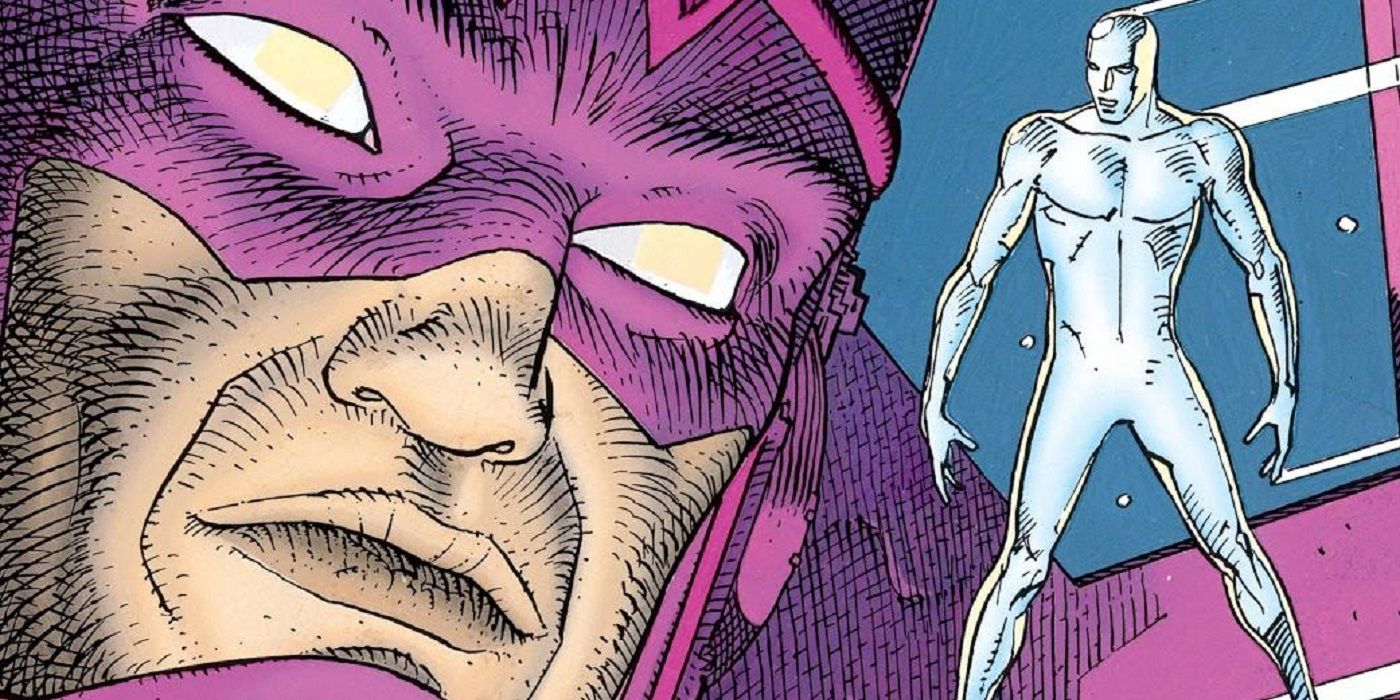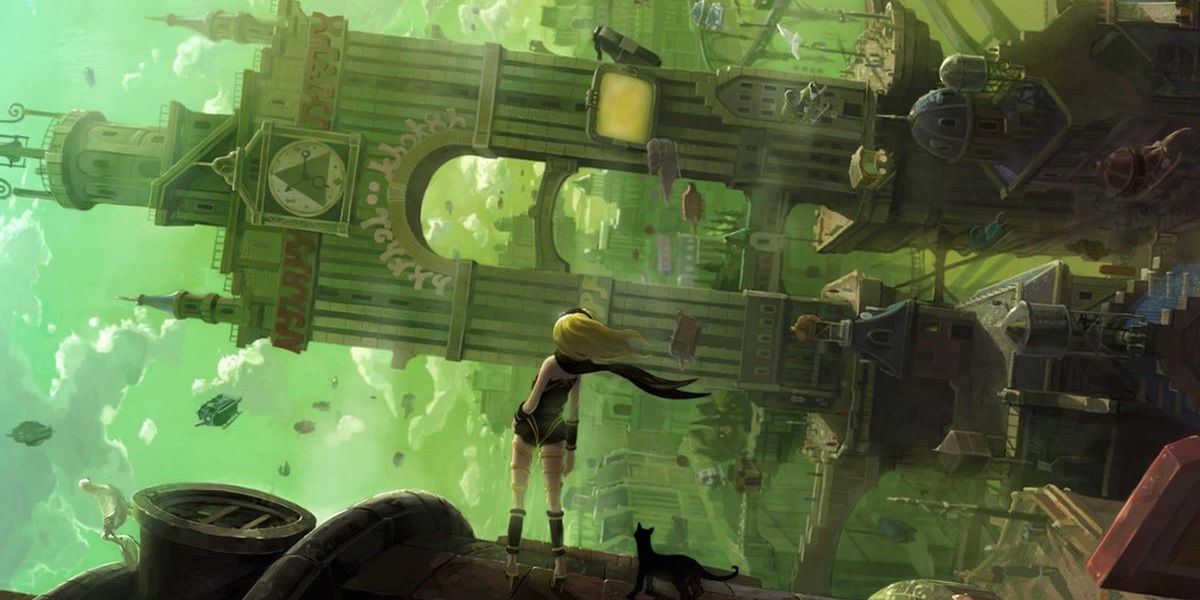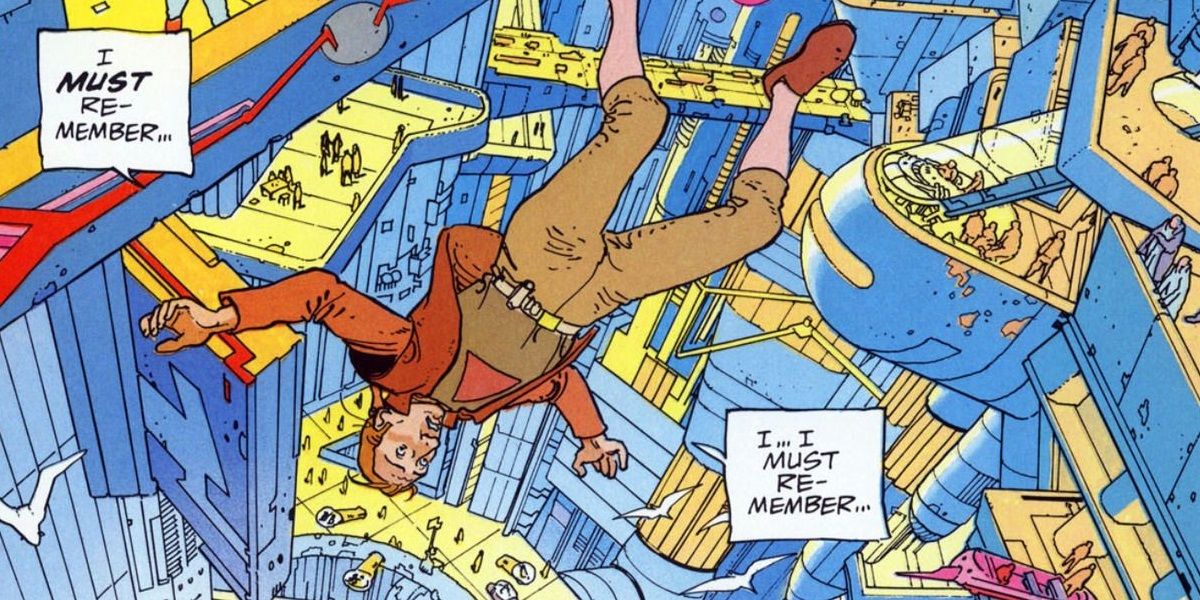While the PlayStation Vita's shelf life didn't last as long as Sony's other consoles, it still managed to release some great titles that helped put the handheld system on the map. One of those titles was Gravity Rush, a mind-bending role-playing game that gave players the power to control gravity. The title had a unique mechanic that turned any surface into something that the game's protagonist, Kat, could walk on. By controlling her own gravity, many amazing visuals were born from it.
While developed in Japan, the mind-bending world had major influences from a famous French comic book artist named Jean Giraud. While many may not know his real name, his other name is world-renowned: Moebius. His hyper-detailed style has influenced some of Japan's most beautiful works, including the films Akira. Moebius also helped influence the Studio Ghibli classic, Nausicaä Of The Valley Of The Wind, whose idea was born from his short story Arzach. However, out of all of his influences, Gravity Rush may be the one title that brought his vision to life the most.
Gravity Rush followed the story of Kat, a young girl with amnesia. As Kat, players explore the floating city of Hekseville, where she tries to discover her past and inadvertently becomes a hero. The role-playing game is told with a semi-comic book style approach, with some scenes taking place through comic book panels. The game's colors and location are also reminiscent of some of Moebius' earliest works. However, the game's director, Keiichiro Toyama, had even included the artist's inspiration in one of the game's characters.
Dusty the Cat is a character that was often seen with Kat as she embarked on her journey of self-discovery. However, Dusty was heavily inspired by The Eyes of the Cat, a 1978 graphic novel by Alejandro Jodorowsky and Moebius. From there, his influences blossomed outward, touching every aspect of the game, especially in the city of Hekseville. But one of the best ways players saw this influence come to life was while they utilized the game's core mechanic.
Graphic novel series The Incal, first released in 1981, again teamed Jodorowsky with Moebius. The story took place in a sprawling city that appeared to invert on itself in a never-ending concrete jungle, like the artist's name. One of the earliest moments featured the main character being thrown from a building, and while he was falling, the frame gave the character the image of being in a state of freefall. Decades later, this singular moment became the basic idea of Gravity Rush. As Kat would shift her gravity to stand on a wall, she was never careening towards her location with the precision of awareness of Iron Man. Instead, she would slowly gain momentum as she went from freefall to a descent. However, in those brief moments, she became that panel in The Incal, come to life.
The city of Hekseville also brought out some of Moebius' best and strangest ideas. While the world is reminiscent of an older time in Europe, it makes sure to add enough of a science fiction influence to give off a similar tone as the city of Columbia in Bioshock: Infinite. However, its larger inspiration was brought to life in 1976's The Long Tomorrow by Dan O'Bannon and Moebius, which featured a similar cityscape that evoked a feeling of familiarity in an otherwise completely fictional world.
Jean "Moebius" Giraud may have left his largest mark in the world of comics with trippy space adventures in The Silver Surfer. But, his essence lived on through the Japanese titles that still look to his work for inspiration. While films like Akira are historic in their own right, its games like Gravity Rush have mastered the feeling of Moebius' strange atmosphere and maybe even offered a glimpse into the mind that helped inspire one of the PS Vita's best titles.



